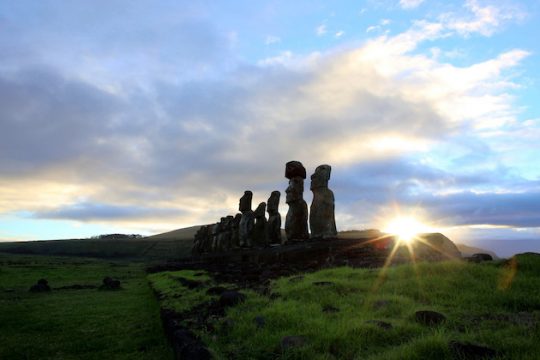The New York Times loves to island hop, going from one island to the next to pronounce its impending doom due to global warming.
It was just last month that we learned after a decade of fear mongering coverage predicting Tuvalu would soon sink that the island had actually been growing.
Unsurprisingly, the study didn't make the front page. No, Tuvalu gaining 181 acres over the past 40 years only managed to make the Times's climate newsletter. The item was a little more nuanced take than their previous Tuvalu coverage that carried headlines like, "A Cry For Help" and "Life After Land."
"Tuvalu is growing (for now, at least)," wrote Lisa Friedman.
"At first glance, the findings, published in the journal Nature Communications, appear to challenge the conventional wisdom that low-lying nations might one day disappear into the sea," Friedman added.
"But the lead author … said simply that the effects of climate change on islands can be complicated."
Now they tell us.
But for the Times, it's only "complicated" when its assumptions are proven wrong. It's not complicated when it hops to the next island to pronounce that it, unlike Tuvalu, will soon be sinking into oblivion.
The latest destination is Easter Island, the remote island off the coast of Chile. A Times reporter traveled to the South Pacific to report that the island is "eroding" and "critically vulnerable to rising ocean levels," based on a United Nations report that vaguely says climate change will cause "water shortages, sea-level rise, coastal inundation, and erosion."
The article was accompanied by an editorial over the weekend by Nicholas Kristof, which suggests mankind could be as doomed as the ancient civilization that built the moai statues.
"I came to Easter Island while leading a tour for The New York Times Company, and those of us in the group were staggered by the statues—but also by the reminder of the risks when a people damages the environment that sustains it," Kristof writes.
"I hope that some day far in the future, tourists don't swim through Midtown Manhattan and similarly reflect on the hubris and recklessness of early-21st-century Americans," he said.
"Of course, maybe it'll be fine."
Maybe.
Easter Island is far from the only doomed island, according to the Times. There's Jakarta. The barrier islands that line the Atlantic and Gulf Coasts. Treasure Island and the San Francisco Bay area in general. And Guam faces a bigger threat from climate change than North Korea.
The Times warns its readers that they, too, need to hurry and visit Kutubdia, Bangladesh "before it disappears."
Kiribati "could disappear within the century," but the Times doesn't stop there. "By conservative estimates, some 200 million citizens will be forced to flee their homelands by 2050."
The "fate of humankind may also soon be beyond repair."
At this rate, with five new sinking islands in the past year, and the fact it's virtually impossible to figure out how many islands there are in the world, the Times has endless opportunities to alarm us for years to come.
The Times could send reporters on junkets to Pumpkin Island, a privately owned island off of Australia that was won over a game of poker. Or Monuriki, the uninhabited island where Cast Away was filmed. Or Aoshima, the Japanese "Cat Island" where there are more cats than people.
The Times could profile Spitsbergen, the largest island of Svalbard, Norway, and warn of its impending doom. But maybe not: There are so many Polar Bears on Spitsbergen that gun control is outlawed. Now that sounds "complicated."
